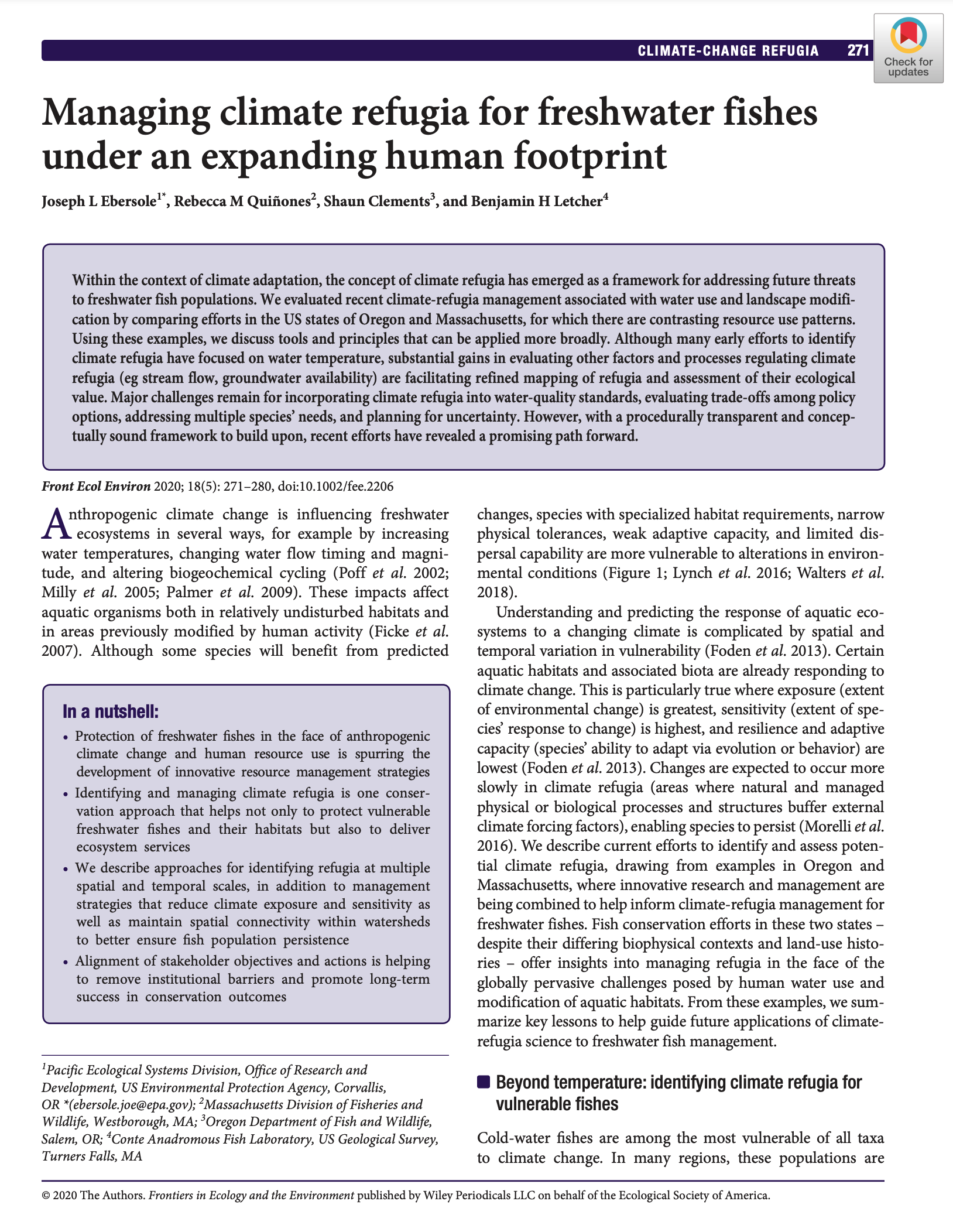
Within the context of climate adaptation, the concept of climate refugia has emerged as a framework for addressing future threats to freshwater fish populations. We evaluated recent climate-refugia management associated with water use and landscape modification by comparing efforts in the US states of Oregon and Massachusetts, for which there are contrasting resource use patterns. Using these examples, we discuss tools and principles that can be applied more broadly. Although many early efforts to identify climate refugia have focused on water temperature, substantial gains in evaluating other factors and processes regulating climate refugia (eg stream flow, groundwater availability) are facilitating refined mapping of refugia and assessment of their ecological value. Major challenges remain for incorporating climate refugia into water-quality standards, evaluating trade-offs among policy options, addressing multiple species’ needs, and planning for uncertainty. However, with a procedurally transparent and conceptually sound framework to build upon, recent efforts have revealed a promising path forward.
